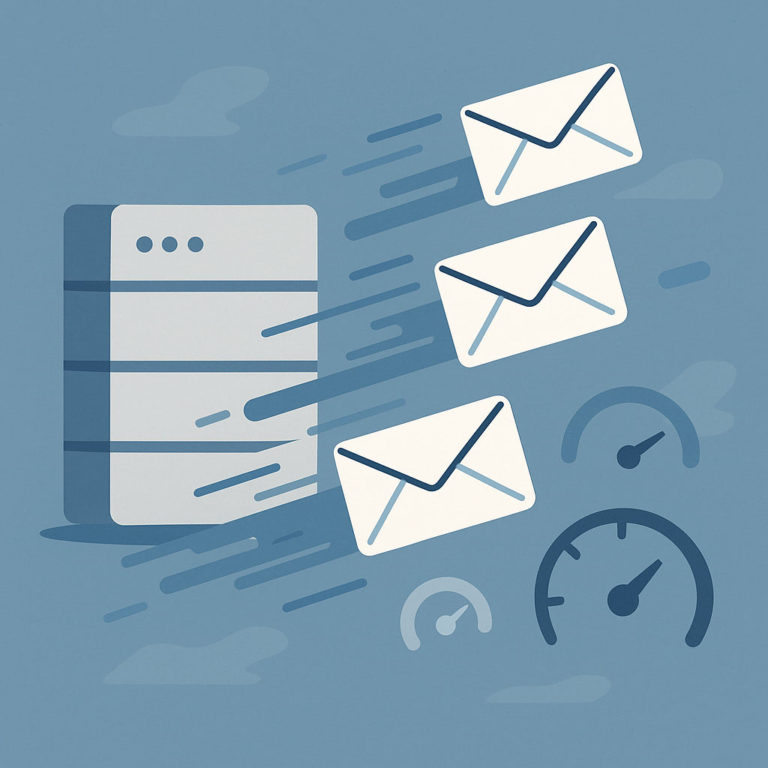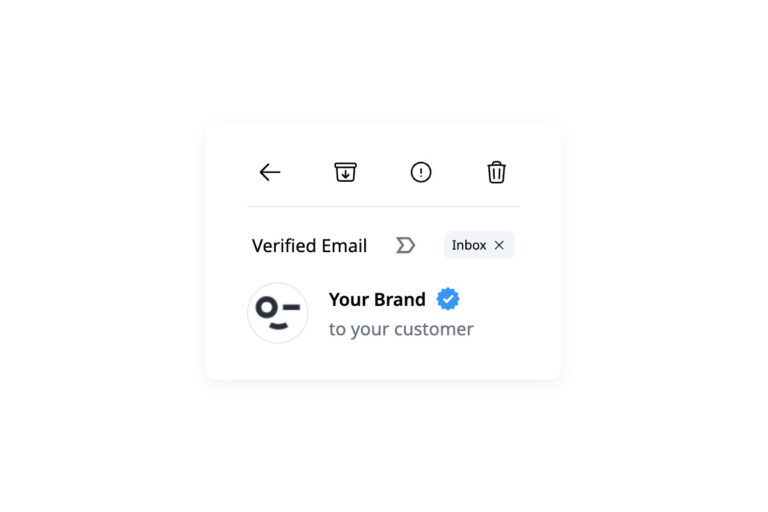Some say email reputation is your credit score with ISPs, blacklists, and email providers. It is not the full description, yet it certainly conveys its essence. Whatever attitude towards this metric you have, you cannot afford to overlook it. It is too important to be left behind.
The more positive it is, the more chances the ISPs will let the newsletter in and allow the company to work its marketing magic on subscribers. The less positive it is, the fewer subscribers will see your email.
Like a real credit score, email reputation is hard to build and ridiculously easy to destroy. Just one wrong step may see you on an IP blacklist that blocks any communication from the company. Effective email reputation management is what every company needs to be in control of the situation. It avoids poor decisions, channels efforts in the right direction, and optimizes crucial processes to build and maintain a high metric.
Let’s consider the essentials, importance, and strategies of email reputation management.
Email Reputation Checker
What Is Email Reputation?
Email reputation is an accumulative score that shows a company’s behavior in an email channel and how well or poorly ISPs and email providers like Sender trust it. Every brand that operates in the area has it by default. It is built over time and can easily go down if a company takes the wrong step.
Although only ISPs, email providers, and security vendors know how they calculate it, the following criteria have an important say:
- number and frequency of emails sent from the company to customers;
- quality and healthiness of the email list;
- sending behavior;
- key deliverability metrics;
- soft and hard bounce rates;
- spam complaints;
- number of emails that hit spam traps;
- overall email engagement: open rate, click-through rate, and even how many subscribers delete or forward the company’s email;
- blacklists.
IP and Domain Reputation
Along with being an accumulative and ever-changing score, email reputation consists of IP reputation and domain reputation influenced by their specific criteria.
IP reputation determines the quality of the company’s IP address. It is a numerical measure of the trustworthiness of an IP address. Many factors impact it, such as previous behavior, the volume of traffic, the type of traffic coming from the IP address, spam or malware scripts on the hosting, any malicious activity now or in the past, and others.
Domain reputation determines the quality of the branded domain. It is another numerical measure that shows the company’s credibility in the web arena. Unlike IP reputation, it depends on engagement level, spam complaint rates, spam traps, and bounce rates.
Differences between IP and Domain Reputations?
IP and domain reputations are critical for building a positive brand image. They function and interact differently in the context of email deliverability. Understanding the nuances between them helps marketers manage email reputation effectively and build high-converting strategies and campaigns.
So, what are the differences? IP reputation focuses on the source and its previous behavior and history. Volume, type of traffic, and malicious activity are decisive factors. It relates more to the technical company’s presence.
Meanwhile, domain reputation focuses on the brand and its presence on the web and content strategy. It relates more to the content of emails sent to subscribers, overall engagement, and how recipients interact with the email and brand.
The good news is that domain reputation is portable and not connected to IP reputation. If you decide to leave your server provider, you will take your good reputation with you.
Other key differences are:
- IP reputation describes the company’s technical settings and sending address behavior, whereas domain reputation describes the brand’s email practices and responses from subscribers.
- Companies have more control over IP reputation. For instance, they may change the shared IP to a dedicated one and increase their score. As for domain reputation, companies should deal with factors beyond just sending practice. Subscribers’ reactions, behaviors, and moods are among them.
- IP reputation is specific and connected to a certain address, whereas domain reputation belongs to your brand and follows you wherever you go.
When we are clear on IP and domain reputations, we can move to the basics of email reputation management.

IP reputation vs. Domain reputation
What Is Email Reputation Management?
Email reputation management coordinates and administers tasks to organize a productive workflow that establishes and keeps a positive sender reputation. It is an ongoing process because the metric forms over time and is prone to changes.
Email reputation management aims to create an environment that lets integral units (program, service) and email officers work efficiently. It serves as a guide to channel efforts in one direction and effectively accomplish the company’s objectives. It fulfills several crucial tasks.
- It monitors the current reputation of the brand’s email sender domain and IP through professional tools.
- It takes measures in case reputation declines. This includes working closely with the subscription list, addressing issues with recipients (especially spam complaints), removing any invalid email addresses, eliminating spam traps from the email list, and delisting from blacklists.
- It involves maintaining a positive email reputation by introducing the best practices. It describes ways to define accurate email cadence, check content against spam, and develop non-misleading subject line and content.
- It tracks the fundamental elements and factors that control the brand’s perception, as seen through email campaigns.
Importance of Effective Email Reputation Management
Internet service providers are overprotective of their clients. They let in only relevant emails to reduce clutter, spam, and cyber threats. They use different instruments and rely on certain factors to fight for the client’s security and a safe environment in an email channel.
Besides inner algorithms, ISPs use an email sender’s reputation to decide the fate of a company’s email. Depending on its score, a digital newsletter will end in the inbox or the junk folder or be blocked completely. The higher the brand’s reputation, the more chances it will pass ISPs and email providers barriers and reach its destination. With effective email reputation management, companies may secure high deliverability and establish a foundation for good open rates and conversions.
This is not the only reason why effective email reputation management is important for the company. As a crucial factor, it directly impacts the key metrics and revenue. If a company has a low score, ISPs reject their emails immediately. This outcome reduces the visibility and nullifies the effectiveness of marketing efforts. It may easily ruin the campaign and decrease expected revenue.
Another good reason to take email reputation management seriously is that it helps to develop trust and maintain customer credibility. When you are in control of your reputation, you may define weak spots, inconsistencies, and things that have gone wrong. This knowledge helps to deliver better results next time, ensuring higher customer retention and loyalty.
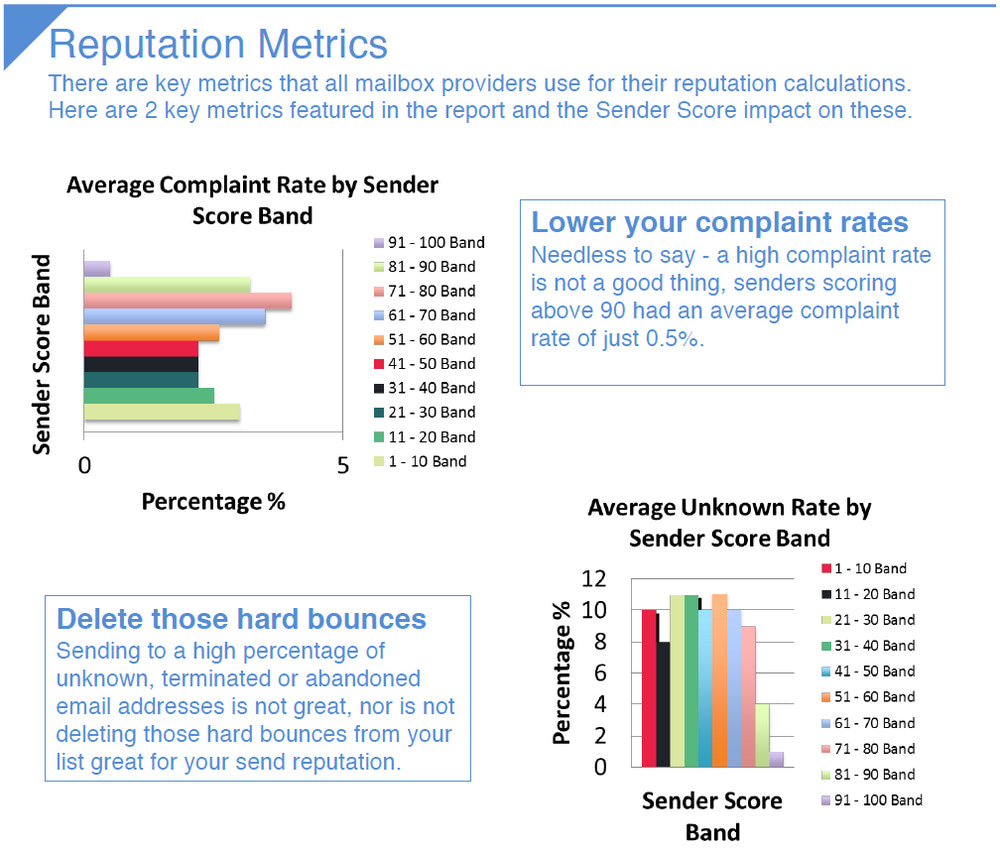
Visual snippet from email deliverability reputation infographic by Cumulo9
Causes of Poor Email Reputation
Effective email reputation management comes with multiple benefits that take any company to the next level. However, it is tricky to handle as an accumulative score comprising several variables. Every decision you make within an email marketing campaign and strategy may backfire.
Let’s define the main factors that have either positive or negative ramifications on email reputation. Delivery rate, deliverability rate, open rate, bounce rate, and spam complaint rate are the most critical.
Delivery and Deliverability Rates
Often used interchangeably, these two rudimentary metrics have a huge “say” on the effectiveness of email campaigns and ipso facto email reputation.
Delivery rate identifies emails that reach the servers of your subscribers’ inbox providers. Meanwhile, the deliverability rate shows the number of emails that reached the recipient’s inbox. The first shows soft and hard bounces, and the second reveals where emails landed.
Both these metrics hint about the health of email reputation and may either improve or destroy it.
Open Rate
Open rate is always considered seriously by email marketers. Although it does not guarantee conversions and leads, it plays a vital role in the brand’s position in the email channel and the overall sender’s reputation.
Good open rates mean high client trust and engagement. It signals ISPs to let email in and grant companies with a positive email reputation. In contrast, poor open rates give ISPs a reason to reject a brand’s emails next time.
Hard and Soft Bounce Rates
Hard or soft, a high bounce rate brings no good for email campaigns and brands. It deprives the company of its chance to play magic on subscribers, generate much-needed conversions, and build a strong sender’s reputation.
Hard bounces mean poor subscription hygiene and illegal ways of acquiring contact addresses. It is an unacceptable practice that ISPs punish. Therefore, the higher the bounce rate, the lower the email reputation. Soft bounces are not as draconian as hard bounces. However, still, they may have an aftermath.
Companies must monitor these metrics closely to learn how to keep them in the valid range and avoid escalation.
High Spam Complaint
Like bounce rate, a high spam complaint rate means only bad things for the company and its campaign. Failing to deliver value and annoying subscribers are strong arguments for ISPs to reject your emails and lower your sender’s score.
On top of that, an exceedingly high spam complaint rate may easily get you on a blacklist. Consequences of that vary from low to high. For instance, if you make it into one of the respected blacklist providers, you may forget about reaching the majority of your subscribers any time soon.
Effective email reputation management encourages marketers to monitor this metric, promptly address all complaints, and cater to subscribers’ needs instead of blindly promoting products.
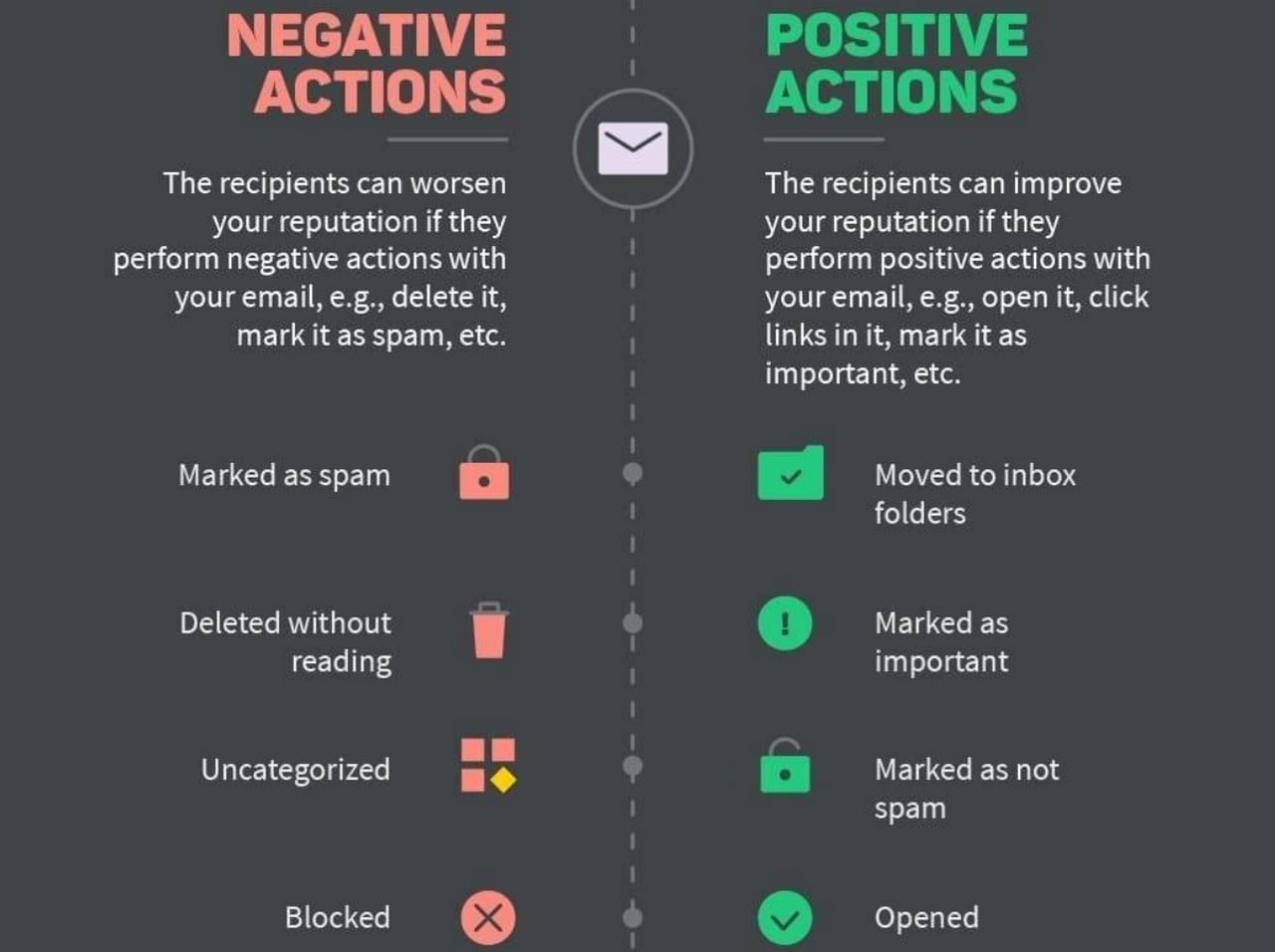
Visual snippet taken from infographic by Pipedrive
How to Define the Key Cause?
You may know what factors may impact your sender’s reputation, but what causes the drop is always a mystery. Besides the metrics featured above, such factors as email list quality, email consistency, sending history, and the quality of the content may easily distort the picture.
What to do? One of the best practices to implement in your email reputation management is to inspect email newsletter designs, subject lines, and technical settings. Rigorous tests and analysis will define faux pas, inconsistencies, and possible factors that raise spam flags, cause complaints, or drive poor subscriber engagement.
The good news is companies do not have to do this manually. There are professional tools to address this issue. Take Unspam as a top representative in the niche. It runs numerous tests to reveal things that might affect your email and content reputation. It does a comprehensive deliverability test along with checking your technical settings. If SPF, DKIM, or DMARC are incorrect, it will notify you. If you are on the blacklist, it will highlight this fact as well.
The service analyzes the content and subject line against the best email practices to define weak spots in content strategy. In addition, it offers recommendations to improve body copy and overall engagement and may even assign one of its experts to deal with your special cause.
5 Top Strategies for Effective Email Reputation Management
There is no one-size-fits-all solution for building effective email reputation management. Yet, there are time-proven strategies that may work for different scenarios. We will divide them into several groups to help you decide which is appropriate for your current business’s state, sender’s score, position on the market, and marketing goals.
Note tasks under each category are highly recommended but not restricted to this particular strategy. You may easily mix and match them to advise your tactic.
Protect Email Reputation
We will start with a proactive and a bit aggressive defense strategy that fits companies at various stages during their lifecycle. It involves thoroughly inspecting your email reputation and defining and eliminating weaknesses of your tactic.
First, examine every key aspect: technical settings, segmentation, body copy, subject line, and email cadence. Every detail that does not align with industry standards and best practices is a potential drawback that drags you down.
Second, revisit the hosting provider to ensure your IP reputation is clean. If budget allows, choose a dedicated server over a shared one. If not, then monitor its health regularly. Do not shy away from changing your provider in case something is wrong.
Third, get your domain ready. Warming up is one of the best practices to protect your email reputation. It works great for startups with fresh domains and well-established companies that have previously experienced deliverability concerns.
Finally, monitor and refine your email practices to deliver high-quality, relevant content. Minimize spam trigger words in the subject line and body copy. Clean your subscription list regularly to remove bounced, lapsed contacts and spam traps. Check blacklists to comply with their recommendations and stay away from their databases.
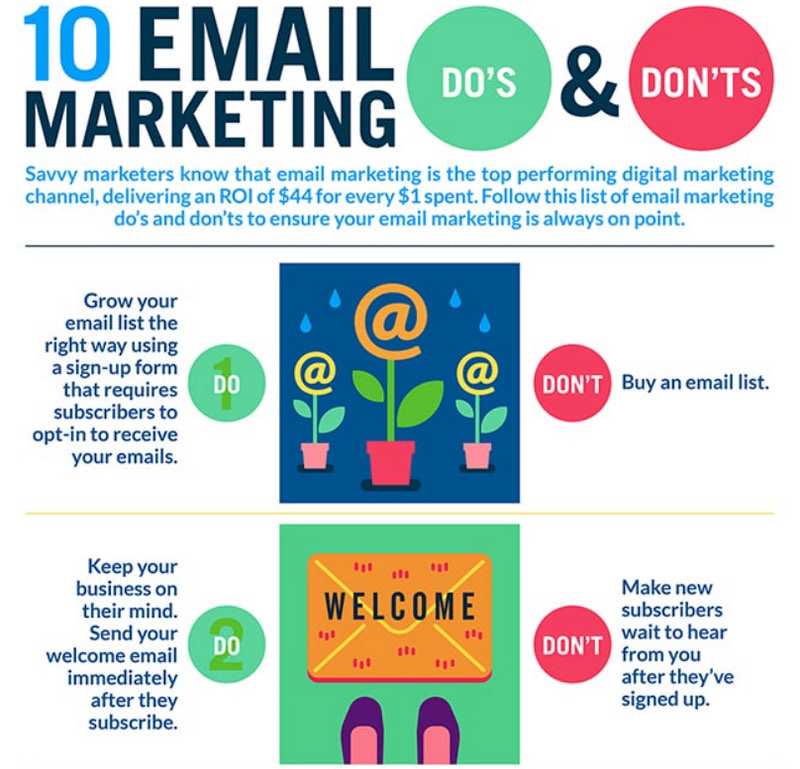
Ten email marketing do’s and don’ts
Perfect Email Reputation
What if your reputation is above average but still not as good as you want? The time has come to perfect your email reputation management. As they say, there is always room for improvement, especially in email channels prone to constant changes and fluctuations.
This strategy is trickier than the previous one because the sender’s score builds over time. You must develop long-standing tactics that eventually increase your email reputation and trust with ISPs and providers.
Start with examining your current strategy. It is crucial to define areas for improvement. It can be one or several factors. Focus on them and decide what measures to take. It is advisable to introduce enhancements gradually not to compromise your sender’s score, deliverability metrics, and trust. It is easy to lose your points. Therefore, it is crucial to build on what you have and stick to effective solutions for your company.
For instance, if you have an average engagement rate, the time has come to revisit and optimize your content strategy. Ask yourself, what can you do to get a positive response from your subscribers? What will encourage them to interact with the brand more actively? Many factors influence that. Therefore, the best decision is to capitalize on the niche’s best practices.
At a minimum, analyze your subscriber’s preferences, behavior, and needs. Create profiles to segment your subscription list accurately. Use professional platforms to create hyper-personalized emails. Make the design look eye-catching and modern with Postcards. Define the perfect email cadence. Finally, analyze each step you take to see whether you are moving in the right direction.
If deliverability is your concern, seek help in the corresponding area – multiple articles on the web hint at how to improve this metric. Speaking of which, we have a guide on how to fix deliverability issues.
Perfecting email reputation calls for companies to monitor the market’s fluctuations, target audiences’ preferences, and use professional tools to define decisions and campaigns that work best for customers.
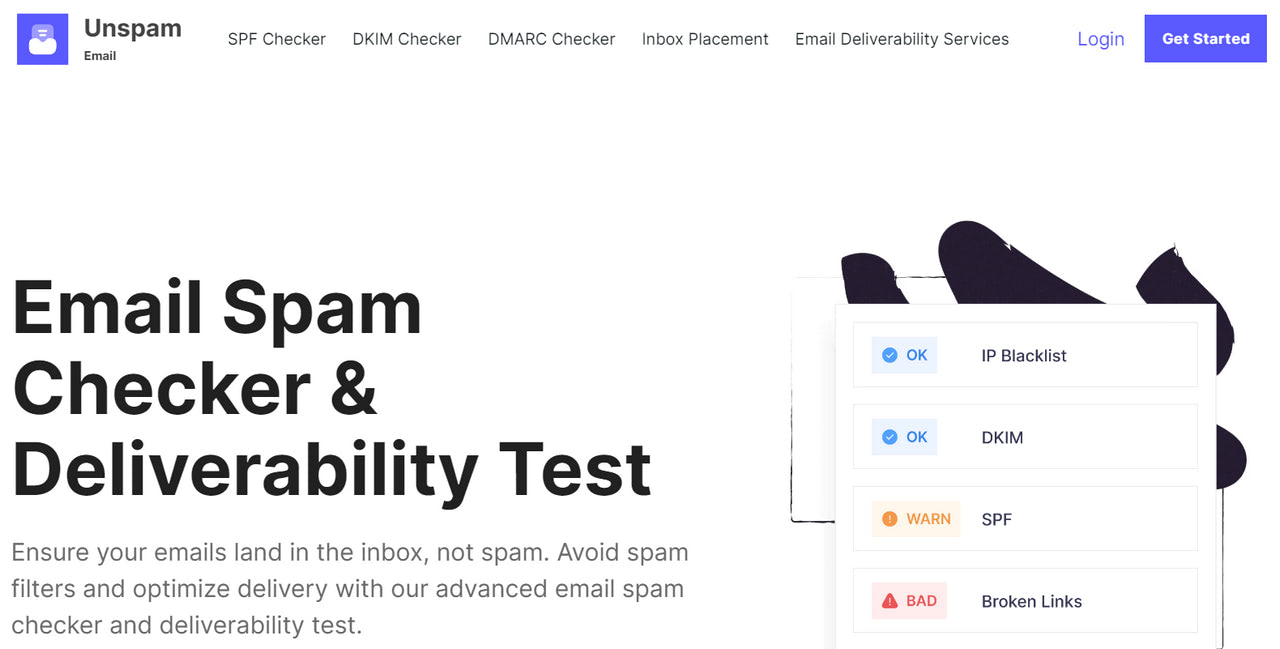
Unspam – professional email spam checker and deliverability test
Maintain Email Reputation
What if you are totally satisfied with your email reputation? Do not think that your job here is over. Believe it or not, you cannot sit and relax. You may easily lose your hardly-earned email reputation within a night if a blacklist catches you. The time has come to adopt a supporting strategy that will keep your email reputation nice and shiny and minimize scenarios that may lead to failures.
The good news is that there are proven techniques to develop effective email reputation management for such scenarios. Follow these best practices:
Perfect the opt-in process. Use a double opt-in procedure with personalized emails. It establishes healthy customer relationships from the first interaction while meeting GDPR and CAN-SPAM regulations.
Simplify the opt-out process. Ensure your subscribers may easily delist themselves without extra steps. Not only is it a law for companies that operate within U.S. and EU borders, but it is also a great practice to avoid spam folders and complaints.
Keep a vigilant eye on laws and implement changes right away. GDPR and CAN-SPAM are constantly improving to fight cyber-attacks efficiently and create a safe environment in the email channels. Ensure your email marketing strategy, campaign, and email content comply with their current regulations and standards.
Provide a preference center for subscribers. Add the link to this page to every email you send to subscribers. It will minimize spam complaints and unsubscribe rates and cement relationships between the brand and clients.
Authenticate your email domain. Ignoring technical settings is the easiest way to tank email reputation and destroy trust with ISPs. Set up DMARC, DKIM, and SPF correctly to validate the email and secure connection with subscribers. If you are in doubt or lacking in skills, use professional platforms. They will do all the heavy lifting for you.
Keep proper IP allocation. Perhaps this is one of the trickiest tasks because if you use a shared IP address, you never know whether it is clean at the present moment. Monitoring IP addresses could not be overstated enough. Visit and revisit your IP reputation to keep it clean, even if you use the dedicated server.
Finally, adopt a proactive email reputation management strategy: stay informed, track metrics, and avoid blacklists at all costs.
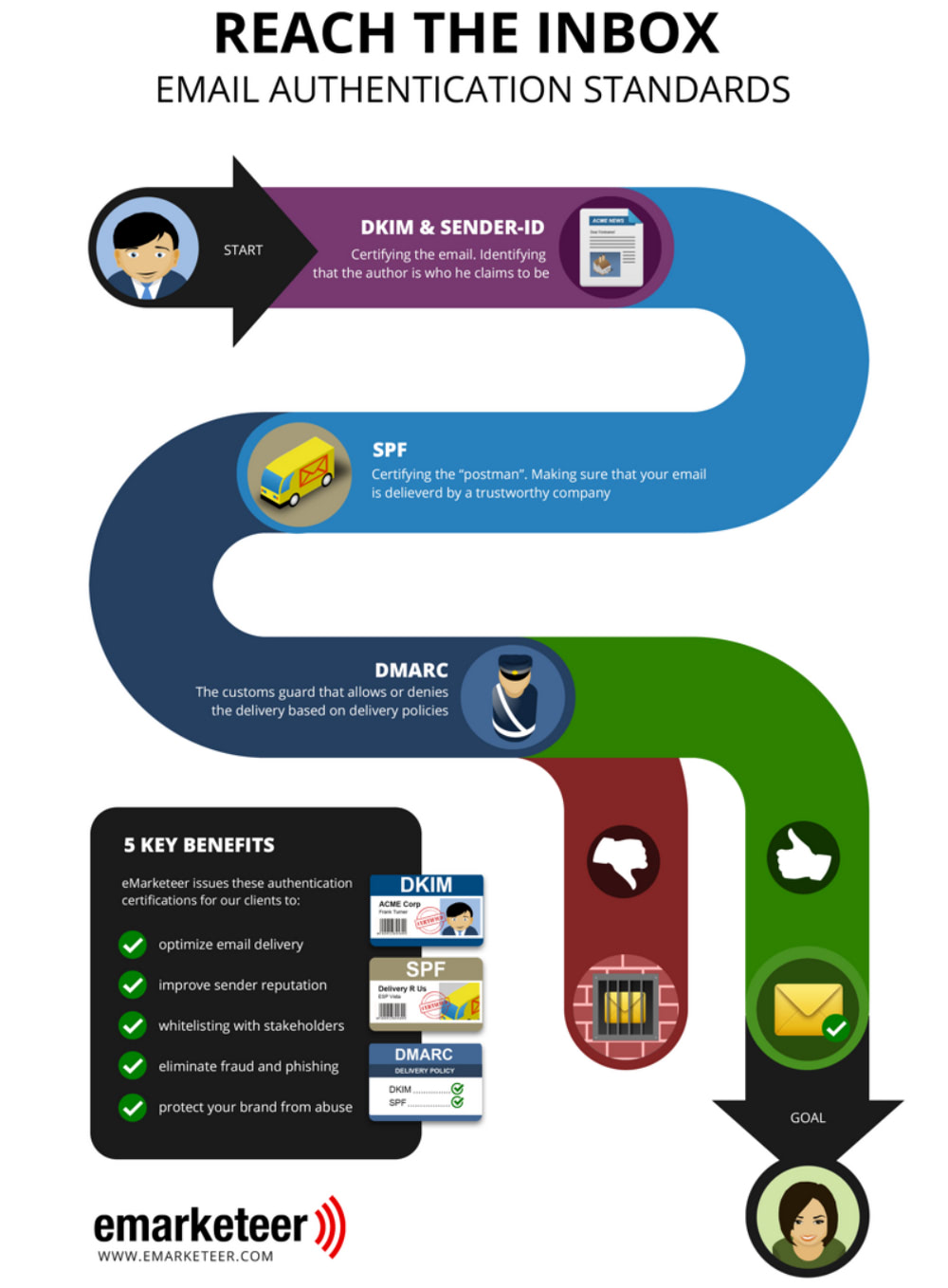
Importance of authenticating your domain (infographic by emarketeer)
Recover Email Reputation
A tarnished email reputation is the worst scenario that any brand could have. However, it happens all the time. Just one slip may bring drastic consequences. Sometimes, this aftermath nullifies everything. The good news is nothing is beyond repair. Pull yourself together and develop a recovery plan for email reputation.
Like the previous strategies, companies must start with a thorough analysis of the current situation. It is imperative to find the cause of the problem. You may narrow the searches dramatically with professional platforms and tools like Unspam. Check out the error log and contact your provider to find the technical roots of the problem.
Then, rigorously assess your current email practices. High bounce rates, an excess of spam complaints, engagement issues, and a decline in open rates may pinpoint the root causes of your reputation drop. These indicators offer insights into the health of your email campaigns.
Afterward, check email authentication. Use Unspam to see whether they are correct. If the legitimacy of your emails to ISPs is under concern, you must eliminate this.
Finally, check blacklists. Focusing on the big players is highly advised since they impact email reputation the most. Visit Spamhaus, Spamcop, and Barracuda. Being listed in one of them may be the main cause of the decline in email reputation. Engage in the delisting process and implement post-delisting actions.
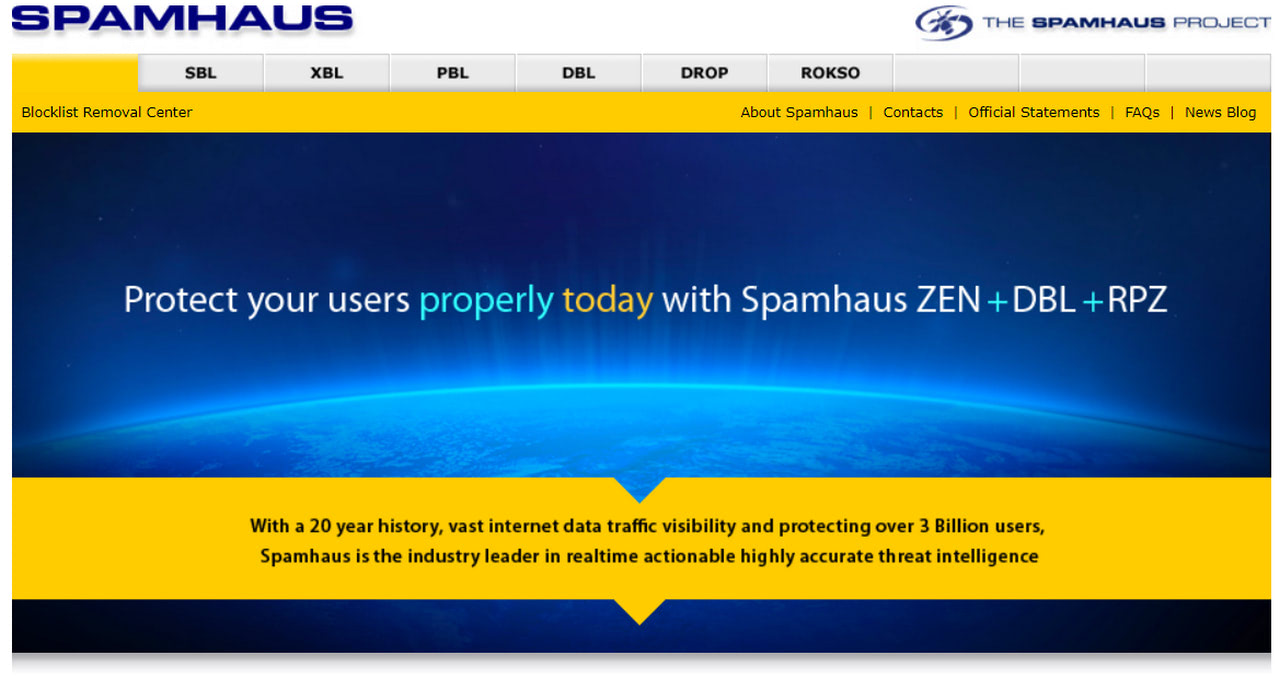
Fortify Email Reputation
The last strategy for creating effective email reputation management is adopting practices to fortify your tactic. It is not about improvement; it is about reinforcement. You may have a perfect email marketing plan, but you must reinforce its efforts through reliable partnerships to protect it from going wrong. In this case, you need professional email marketing software and tools.
Professional email marketing tools like email service providers, deliverability tests, spam checkers, AI instruments, and blacklist monitors provide brands with a solid foundation to build, grow and maintain email reputation using the most reliable practices and algorithms.
They have everything businesses need to plan, execute, and analyze successful email campaigns and ipso facto achieve marketing goals. They maximize the potential of email marketing efforts with automation, personalization, AI, and other high-end solutions.
The niche of professional email marketing instruments is constantly replenishing and upgrading. You may find assistance to address every issue you have with email marketing. For instance, you may define the current sender’s score, conduct deliverability tests, check emails on spam, test authentication, visit IP and domain blacklists on schedule, locate areas for improvement, use AI to generate content, and build fully responsive, mobile-friendly, and inclusive email design within minutes.
However, finding the right tools to fortify your email reputation management is crucial. Do not immediately fall for big and popular names, though they certainly have something to show off. Sometimes, your company needs a unique personal approach from a small service. Sometimes, new names in the niche may offer one-of-a-kind solutions.
Therefore, keep an eye on services and products in the area, examine the features and capacity, and choose those that reinforce your marketing efforts within your company’s budget.
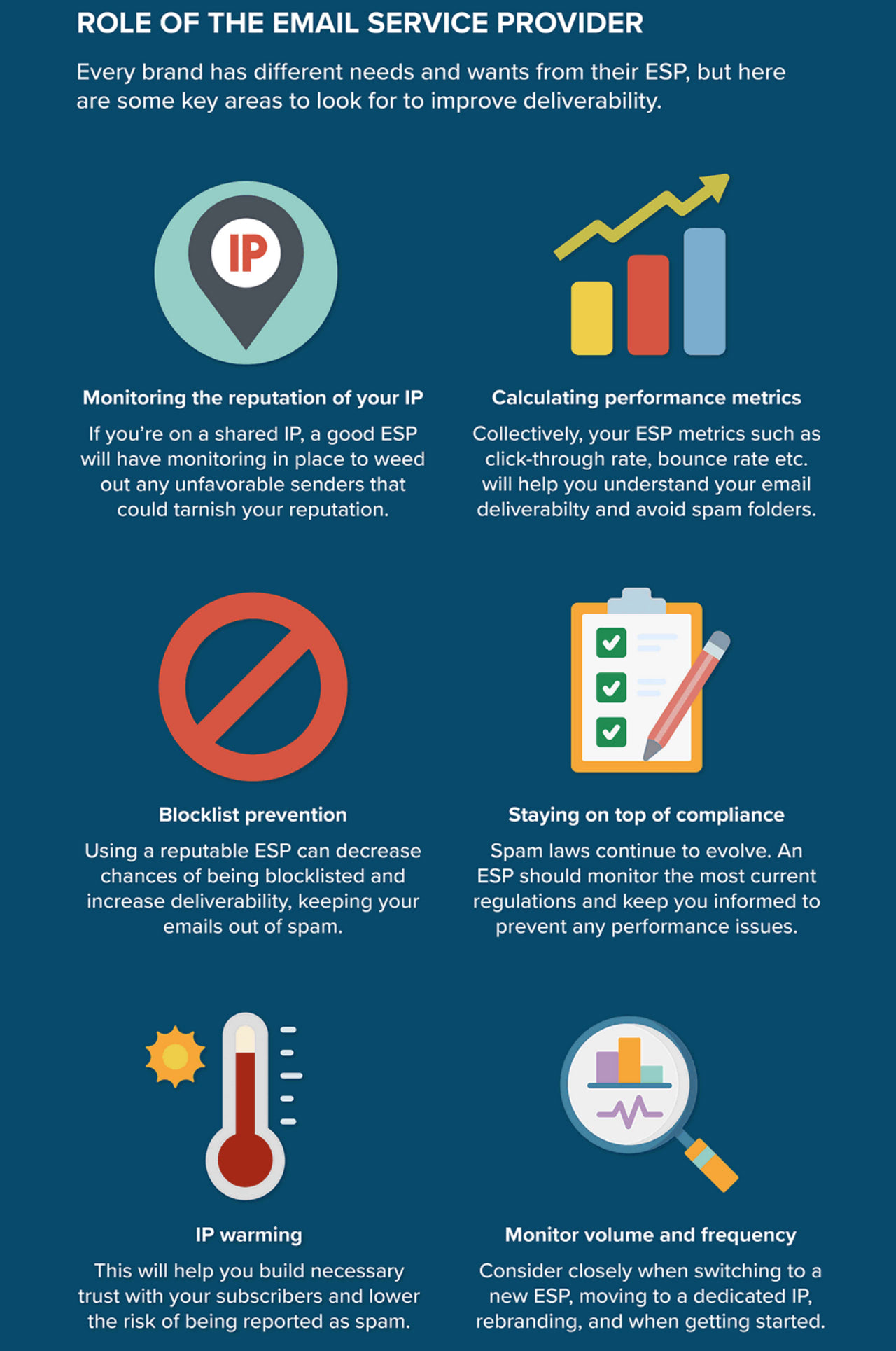
Role of an email service provider (visual snippet from infographic by Litmus)
Conclusion
Ensuring a positive email reputation is critical for companies that want to succeed in their niche and use email channels as a long-standing partner. It is tricky to handle as a composite score that builds over time and depends on numerous factors. Without proper management, it is nearly impossible.
Effective email reputation management organizes and optimizes processes to maintain a positive email reputation and increase the impact of marketing efforts. It helps the company stay on top of its scores and reinforces the brand’s position in the market.
There are many strategies to adopt. However, it is crucial to prioritize those that help your company in its current state build and maintain trust with clients and ISPs through socially responsible practices and professional tools. This way, you get a solid foundation to run marketing campaigns efficiently and contribute to the safety of the email channel.



